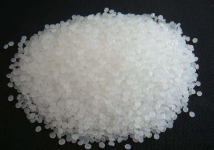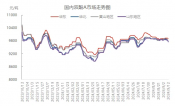read: 753 time:2025-07-01 10:32:57 from:化易天下
In the field of organic chemistry, understanding the stability of various ions and molecules is crucial for predicting reaction outcomes and designing effective chemical processes. A commonly discussed topic is why the phenoxide ion is more stable than phenol. This article delves into the reasons behind this stability, focusing on resonance effects, inductive effects, and the nature of the hydroxyl group in phenol.
One of the primary reasons why the phenoxide ion is more stable than phenol is due to the resonance stabilization. In the phenoxide ion, the negative charge on the oxygen atom is delocalized over the aromatic ring through resonance. This delocalization spreads the negative charge over multiple atoms, reducing the electron density on any single atom, thereby stabilizing the ion.
In phenol, although the oxygen atom can participate in resonance with the benzene ring, the oxygen is also involved in a polar O-H bond. The presence of the hydrogen atom creates a partial positive charge on the oxygen, which limits the extent of resonance. As a result, the resonance stabilization in phenol is less effective compared to that in the phenoxide ion.
Another factor contributing to the greater stability of the phenoxide ion compared to phenol is the inductive effect. The oxygen atom in phenol is electronegative, which means it has a strong tendency to pull electrons towards itself. In phenol, this creates a partial negative charge on the oxygen, which is not fully counterbalanced by resonance due to the presence of the hydrogen atom.
When phenol loses a proton to form the phenoxide ion, the resulting negative charge on the oxygen is more effectively delocalized through the aromatic ring. The absence of the hydrogen atom allows the full inductive effect of the oxygen to stabilize the negative charge. This inductive effect, combined with the resonance stabilization, makes the phenoxide ion more stable than phenol.
The hydroxyl group (-OH) in phenol plays a crucial role in determining the molecule's stability. In phenol, the hydroxyl group is both a donating and withdrawing group, depending on the context. It donates electron density to the aromatic ring through its lone pairs, which can participate in resonance. However, it also withdraws electron density through the inductive effect due to the electronegativity of oxygen.
In the phenoxide ion, the hydroxyl group becomes a negatively charged oxygen atom, which is primarily an electron donor. The negative charge is stabilized by resonance, making the phenoxide ion more stable than phenol. The loss of the proton in phenol removes the competing inductive and resonance effects, leaving behind a more uniformly stabilized ion.
In summary, the phenoxide ion is more stable than phenol due to a combination of resonance stabilization, inductive effects, and the nature of the hydroxyl group. The resonance in the phenoxide ion allows the negative charge to be delocalized across the aromatic ring, reducing the electron density on any single atom. The inductive effect of the oxygen atom further stabilizes the negative charge, making the phenoxide ion more stable. Understanding why the phenoxide ion is more stable than phenol is essential for chemists, particularly when designing reactions involving phenolic compounds.

Jincheng Petrochemical's 300000 ton polypropylene plant successfully trial production, 2024 polypropylene market analysis

The ABS market remains sluggish, what is the future direction?

Market differentiation of bisphenol A intensifies: prices rise in East China, while prices generally decline in other regions

The production method and process flow of silicone acrylic lotion, and what are the common raw materials